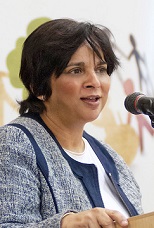The Indian government has warned its citizens living in Canada to exercise “extreme caution” due to a “deteriorating security environment” in the country.
The warning came after Canadian Prime Minister Justin Trudeau announced that Canadian police were investigating “credible allegations” of the Indian government’s involvement in the killing of Hardeep Singh Nijjar.
On June 18, 2023, 46-year-old Nijjar, who migrated to Canada in 1997 and became a Canadian citizen in 2015, was shot dead by two masked gunmen in the parking lot of the Guru Nanak Sikh Gurdwara in Surrey, B.C.
The Indian government has denied any involvement, and as a result of the allegations, both countries have expelled diplomats from the other.
In late 2022, the Canadian government spoke of building a stronger partnership on the shared tradition of democracy between the two countries. But now, after a brief interlude of bonhomie, the Indo-Canadian relationship has reverted to a deep chill.
Canada correctly points out that the involvement of any foreign government in the killing of a Canadian citizen on Canadian soil is a violation of its sovereignty. India insists that Canada, particularly Trudeau’s Liberal government, has consistently ignored so-called terrorist activities against India by supporters of the Khalistan movement.
The Khalistan movement
The Sikh population in India is estimated to be about 22 million (1.7 per cent of the population), the majority of whom reside in the northern state of Punjab. The demand for a separate independent homeland for Sikhs — Khalistan — can be traced back to the 1940s when the British partitioned India and created Pakistan.
The movement was quiet until the 1970s, largely as a result of the Indian government dividing Punjab into a Punjabi speaking majority Sikh state (Punjab) and a Hindi-speaking state (Haryana) in 1966.
However, during the 1970s and 1980s, Punjab was engulfed in a violent political mass movement. Demand for a separate independent homeland was driven by the need to protect the Sikh religion and identity from the assimilationist policies of the Indian state, the need to address the rising unemployment in the agricultural community and Sikh youths.
The violence came to a head in June 1984. Indian Prime Minister Indira Gandhi ordered the army to storm the Golden Temple in the city of Amritsar, the most sacred and central pilgrimage site for Sikhs, where the leaders of the Khalistan movement had taken refuge.
After a week of fighting, not only was the temple desecrated, but more than 400 people were killed — including the leaders of the movement — and hundreds more were injured.
The Sikh community was deeply shocked both within and outside India. Just four months later, in October 1984, Gandhi was assassinated by two of her Sikh bodyguards. Her Congress party’s Hindu workers led anti-Sikh riots that killed thousands of Sikhs.
For the Sikh diaspora, many of whom left India after the riots, the suffering of their community has remained etched in their memories.
The Indian state has taken little action to convict those behind the violence against the Sikh community or to enter into a truth and reconciliation process with the community.
Khalistan activists killed
Nijjar’s murder is the third targeted killing of Khalistan leaders outside India.
In May, Paramjit Singh Panjwar, head of the Khalistan Commando Force, was shot dead by two identified gunmen in Lahore, Pakistan. In June, Avtar Singh Khanda of the U.K.-based Khalistan Liberation force was suspected of death by poisoning.
Nijjar was head of the Khalistan Tiger Force (KTF) as well as an active member of the United States-based group Sikhs for Justice (SFJ); both organizations are pursuing an independent Sikh homeland. Since 2022, SFJ has been conducting referendums in Canada and elsewhere in support of Khalistan.

Hardeep Singh Nijjar was temple president of the Guru Nanak Sikh Gurdwara in Surrey, B.C. He was gunned down in his vehicle while leaving the temple parking lot in June. THE CANADIAN PRESS/Darryl Dyck
In 2016, The Times of India reported that, according to intelligence officials in Punjab, Nijjar had taken over as the “operational head” of the KTF and was forming groups to launch attacks.
It also claimed that Nijjar frequently visited Pakistan and was in contact with Pakistani intelligence. There have also been allegations that Nijjar was running a camp near Mission, B.C., to carry out an attack in Punjab.
Mission Mayor Randy Hawes says that report is not credible. Ralph Goodale, then Canada’s public safety minister, would not comment at the time when asked if there was any basis to that allegation.
In an open letter to Trudeau, Nijjar pointed out that allegations against him were “factually baseless and fabricated.” He added:
“Because of my campaign for Sikh rights, it’s my belief that I have become a target of an Indian government media campaign to label my human rights campaign as ‘terrorist activities.’”
The Nijjar episode is the latest in the ongoing saga between India and Canada over the Khalistan movement. The Indian government claims that Canada’s failure to ban groups like KTF and SFJ compromises India’s sovereignty, territorial integrity and security.
Canada has so far refused to stop the referendums. Meanwhile, India’s current Hindu populist regime remains intolerant of any dissenting voices — especially from minority communities.
This piece was first published on the theconversation.com
